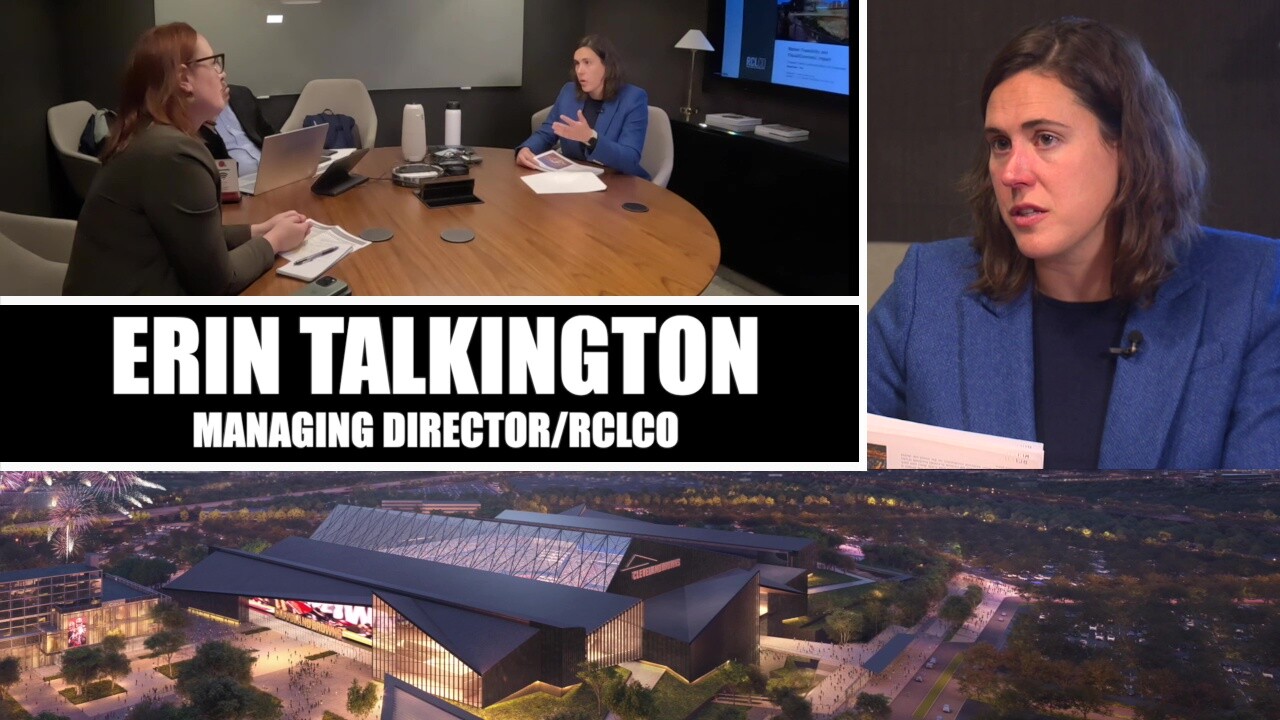CLEVELAND — What would a dome bring to Northeast Ohio?
That’s a key question as the Cleveland Browns try to garner enough support to build a $2.4 billion enclosed stadium in Brook Park, flanked by apartments, hotels, offices, retail and parking.
They’ve described the new venue – expected to cost twice as much as renovating the existing stadium downtown – as the centerpiece of a transformative economic development project.
Owners Jimmy and Dee Haslam have been seeking $1.2 billion in public funding for the stadium, with an eye on debt that would be repaid using tax revenues from the broader project. To make the math work, the Browns would need to fill seats – and not just for football.
“You’re really looking at something that draws new activity and new spending and new visitors to the region,” said Erin Talkington, a managing director at RCLCO, a real estate firm working with the Browns on the Brook Park proposal.

She predicts that a new Huntington Bank Field in the suburbs could bring in six to 10 more major concerts and events annually. The Browns believe an enclosed stadium would be busy 50 to 70 days a year – up from a dozen or so days now at the open-air venue.
Sports economist Victor Matheson is skeptical.
“When they’re suggesting 70 event days, they’re either being wildly optimistic or intentionally misleading,” said Matheson, a longtime critic of public funding for pro sports facilities and a professor at the College of the Holy Cross in Massachusetts.
“Counting a high-school football game as an event day, even though it attracts 300 or 400 people, maybe 1,000,” he said. “We’re talking about a corporate event with a couple of hundred employees at the facility as an event day. No one in their right mind should be considering that an event day. We should be talking about major ticketed events.”

RCLCO predicts that a new domed stadium near Cleveland Hopkins International Airport could bring 1.5 million additional visitors to Northeast Ohio each year.
In a study for the Browns, the consultant highlighted traffic and big events, from Taylor Swift concerts to college basketball tournaments, in three similar markets: Detroit, Indianapolis and Minneapolis.
Those indoor venues, according to RCLCO, see 1.3 to 1.5 million annual visitors.
Data from Pollstar, a company that tracks concerts and other entertainment, shows that those stadiums have hosted anywhere from one to 10 major, ticketed events each year since 2016.
That doesn’t include large sporting events like the NCAA Final Four at U.S. Bank Stadium in Minneapolis; the U.S. Swimming Olympic Trials at Lucas Oil Stadium in Indianapolis; or the NFL Draft at Ford Field in Detroit.
It’s difficult to get complete data on stadium events. And the flow of traffic to a city depends on much more than whether there’s a roof over fans’ heads.
“There’s about 15 large stadiums like this across the country,” Matheson said. “Which significantly restricts the number of large events that a place like Cleveland is likely to get.”
Representatives from Ford Field and U.S. Bank Stadium didn’t respond to interview requests about events and the economic impact of those facilities.
In Indianapolis, Lucas Oil Stadium is connected to the city’s convention center and seven hotels. Last year, the stadium had 22 large events on the books that weren’t related to the Indianapolis Colts, said Andy Mallon, executive director of the Capital Improvement Board, the organization that runs the Downtown venues.
The smallest event there might be a 50-person corporate gathering, he said. The largest ever was Taylor Swift’s three-day run in 2024, when she packed the stadium nightly with 69,000 fans for her record-breaking Eras tour.
“With the event industry, period, it is all about dates. It is all about what you can fit,” said Mallon, who has seen the concert business rebound sharply since the pandemic.
“You’ve got to look at your inventory for the event days,” he said. “With a roof on the stadium, you’ve got 365 days a year in your inventory – for any type of event.”
The Browns say an enclosed stadium in Brook Park would draw crowds from several states away. Talkington believes concerts at the proposed venue could attract 60% to 70% of ticketholders from outside of Ohio.
“There aren’t really significant domed stadiums on the East Coast,” she said. “This is going to be the closest drive for a lot of people that are more toward the Northeast corridor. And also a quick flight.”
She acknowledged that the project team is also talking about small to mid-sized events, like corporate retreats and high-school or college sports that would draw local or regional crowds.
In December, RCLCO and the Browns released a summary of a study predicting that the 176-acre Brook Park project would pump $1.2 billion into Cuyahoga County’s economy.
RELATED: Browns say new Brook Park stadium district will add $1.2 billion to the local economy
Those findings ran counter to a report commissioned by the city of Cleveland, which owns the existing stadium.
RELATED: A Browns move to Brook Park will deal an economic blow to Cleveland, study says
A consultant working with the city said a new, enclosed stadium in Brook Park will largely shift spending within the region – and damage other venues, from the nearby I-X Center to Rocket Mortgage FieldHouse, with a capacity of about 20,000.
Matheson agrees.
“That’s a totally legitimate concern, right?” he said. "Any concert that goes there that is 20,000 fans or less, that’s a concert that would have been coming to Cleveland anyway. That is not a net addition to the cultural scene in Cleveland.”
Experts say large consumer shows and trade shows, like the ones at the I-X Center and the Huntington Convention Center of Cleveland, can be tricky to fit into NFL stadiums.
A representative for the I-X Center, a massive facility where workers once built airplanes and tanks, welcomes any new investments in the neighborhood. He doesn't view a new stadium as a threat.
"If the Cleveland Browns decide to relocate, this could present an incredible opportunity for Cleveland to become a powerhouse destination," Scott McGorty, the I-X Center's director of sales and marketing, wrote in an email. "Combining the largest event space in Northeast Ohio with a world-class stadium in the same area would be a game-changer for the region."
Marquee sporting events, like the NCAA Men’s Final Four, require thousands of nearby hotel rooms – raising the question of whether a Brook Park project will be able to compete with more centrally located stadiums in other cities.

Concerts don't have the same constraints.
Talkington points out that many major concerts bypass Cleveland today for cold-weather markets with indoor stadiums. “We think there’s probably very few events that are true overlap with the arena or with other venues,” she said.
Matheson disagrees – and says the potential net gain of a handful of large concerts and other events each year isn’t worth more than a billion dollars in public subsidy. He also expressed doubts that a new stadium will meet up to Haslam Sports Group’s expectations.
“We don’t know that their management of a stadium will be any better than their management of an NFL team,” he said, alluding to the much-maligned Deshaun Watson deal and the quarterback’s unprecedented $230 million contract.
But Matheson acknowledged that the Brook Park project will bring Northeast Ohio one long-awaited win.
“There’s no doubt that Cleveland, if they build a domed stadium, will get a Super Bowl,” he said, noting that Detroit, Indianapolis and Minneapolis all hosted the big game within a few years of opening new venues.
Still, Matheson cautioned, “this is one Super Bowl over the 30-year life of that stadium. This is one NCAA March Madness over the 30-year life of the stadium. This is not something that you’re gonna be in the regular rotation for. … This is a one-and-done, and that’s about what you’re gonna get.”




